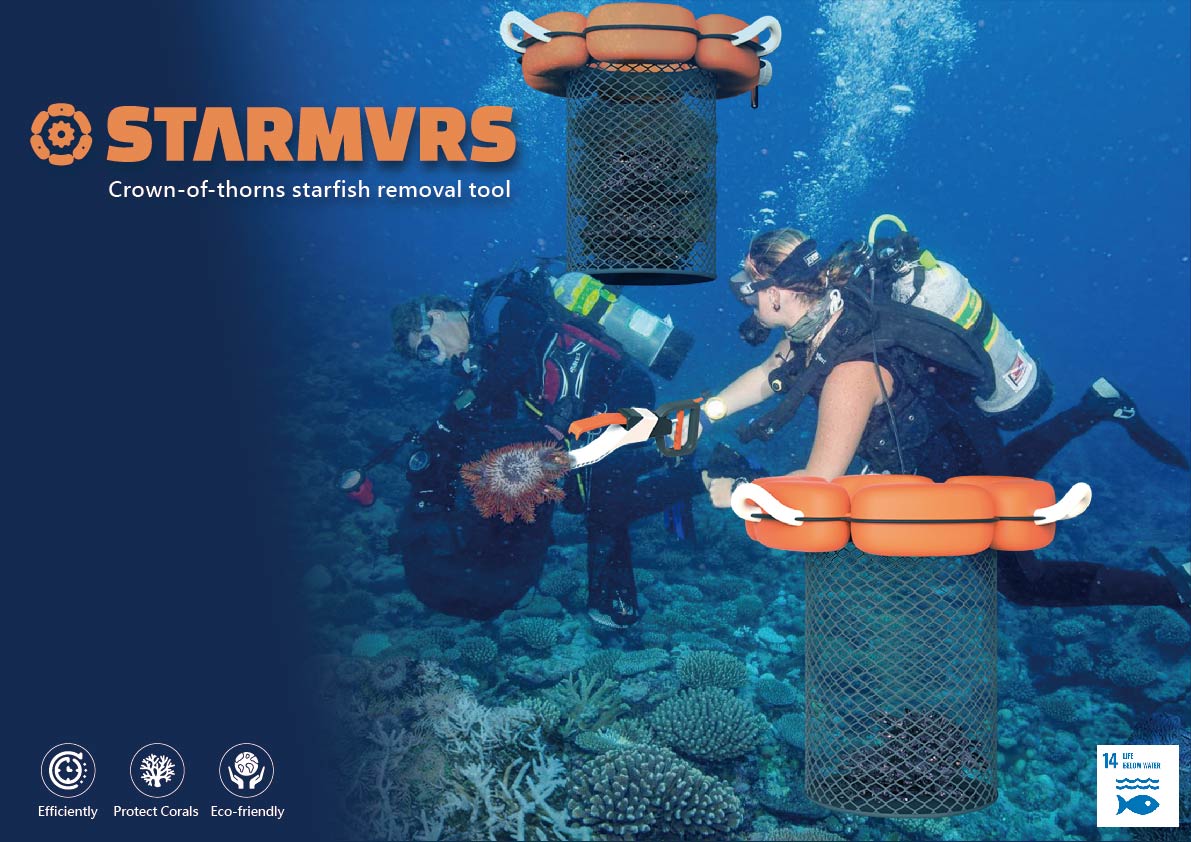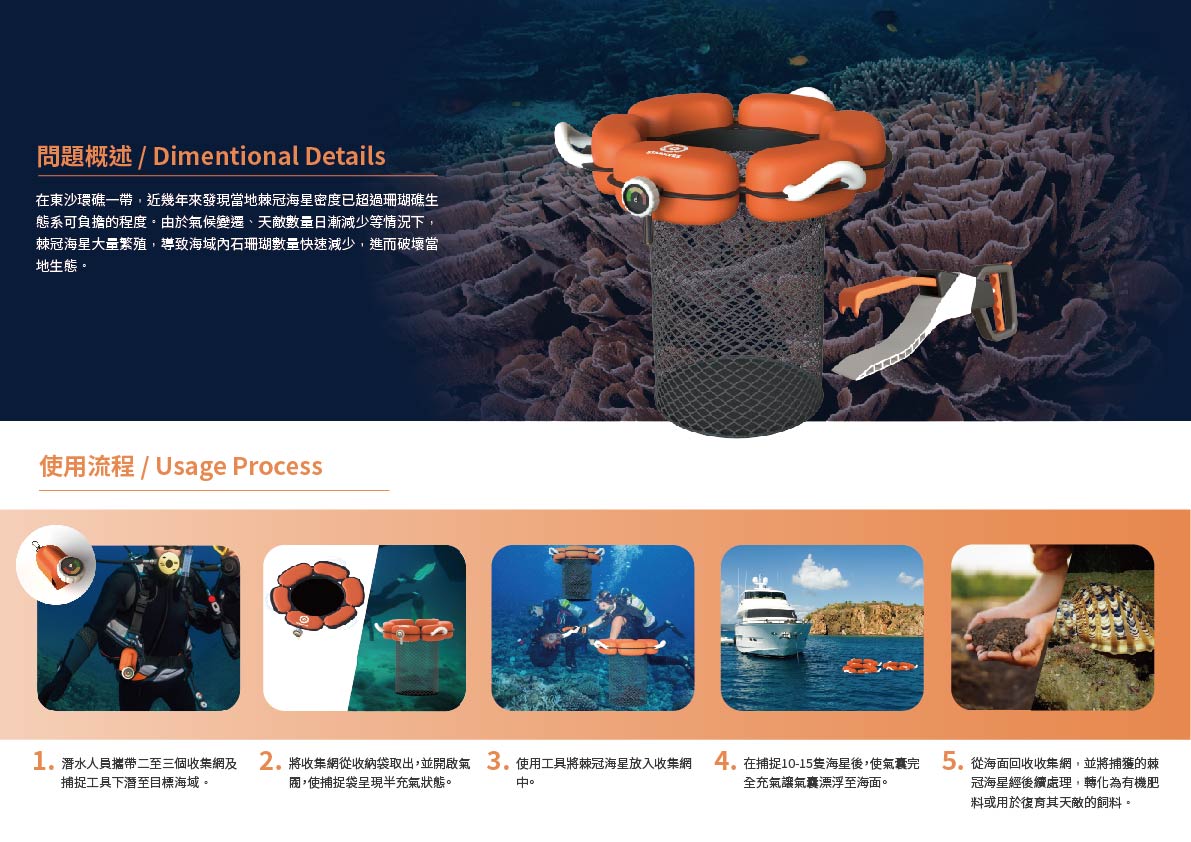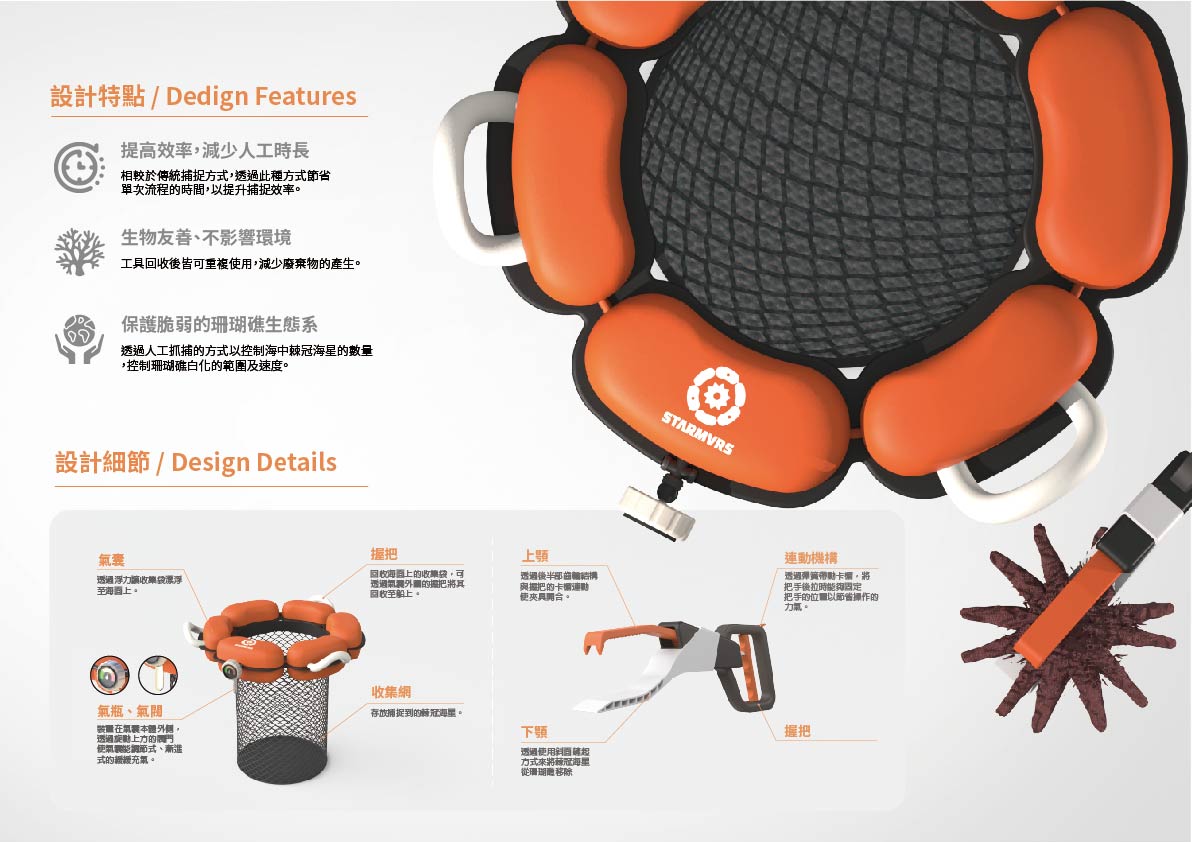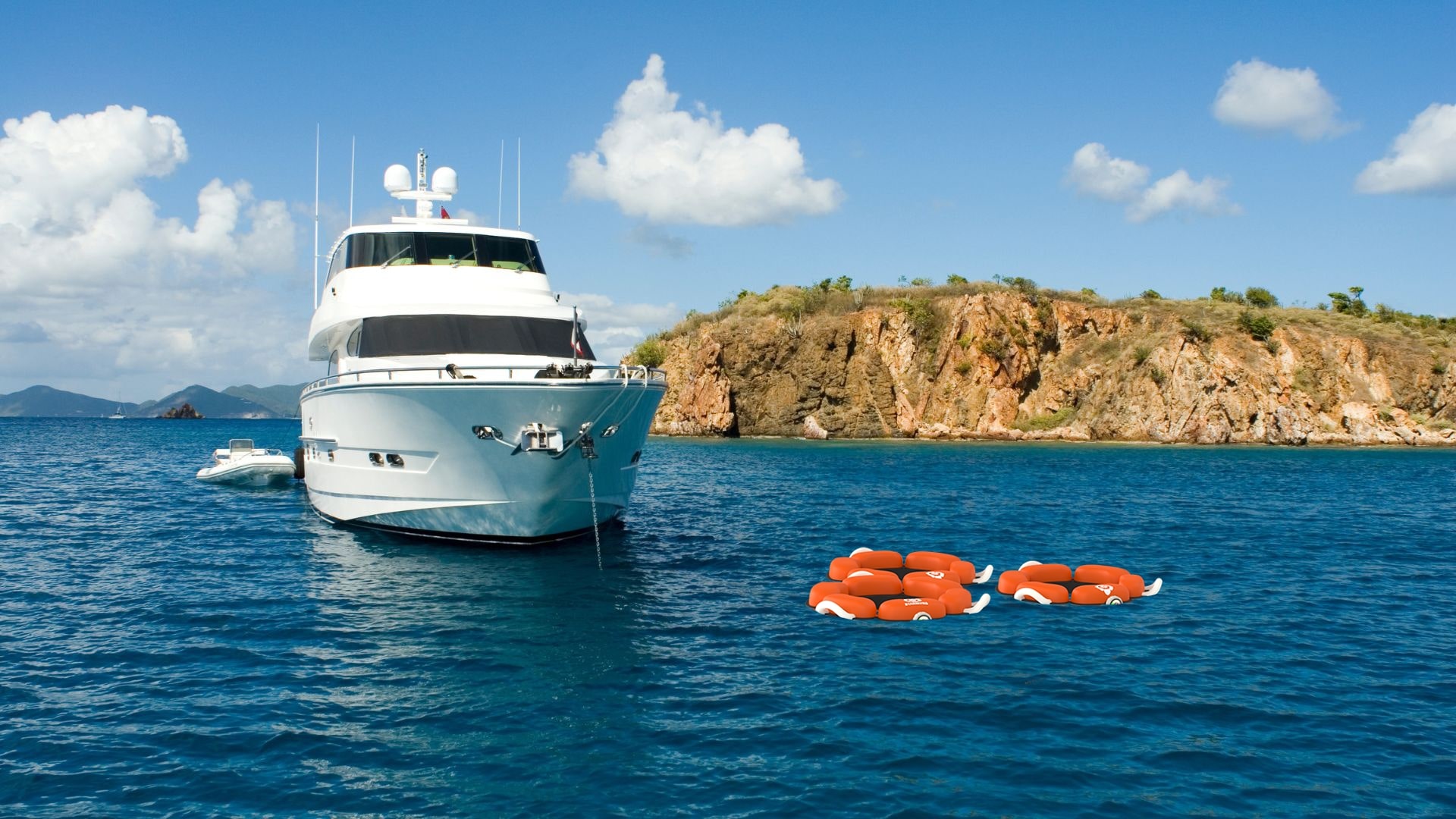STARMVRS 棘冠海星捕捉套組
STARMVRS-Crown-of-thorns starfish removal tool





在東沙環礁和大堡礁一帶,經常可以看到有許多的物種以珊瑚礁為家園,但近幾年澳洲生物研究團隊發現有大片海域的珊瑚白化,且速度極快,生物學者正積極研究來找出兇手。後來發現,兇手正是海域內以珊瑚為主要食物的棘冠海星(俗稱魔鬼海星),在天敵(大法螺、波紋唇魚、油蠟彩膜蝦) 的數量日漸減少下開始大量繁殖,造成過度氾濫,且目前捕捉的方式僅有人工親手抓補和機器人注射藥物,不只效率緩慢且耗時耗錢,正尋找其他更有效的解決辦法。
為了提升現有的捕捉效率,我們設計了省力的夾具裝置和半自動漂浮至海面上的收集網,當發現棘冠海星時,利用夾具捕捉海星,並放到收集網內。收集網收集到足夠數量的海星後,透過充氣裝置將氣囊充氣,使其漂浮至海面,再由船隻進行收集。這種設計不僅節省了操作時間,提升了效率,還能實現後續回收與再利用的目標。
STARMVRS-Crown-of-thorns starfish removal tool
In areas such as Dongsha Atoll and the Great Barrier Reef, many species rely on coral reefs as their habitat. However, in recent years, Australian marine research teams have observed rapid and extensive coral bleaching across vast ocean areas. Biologists have been actively investigating the cause and have discovered that the culprit is the crown-of-thorns starfish (COTS), also known as the "devil starfish", which feeds primarily on coral. With the decline of its natural predators—such as the giant triton snail, humphead wrasse, and harlequin shrimp—COTS populations have surged uncontrollably, leading to severe outbreaks.
Currently, removal methods include manual collection and robotic injection of chemical solutions, but these are inefficient, labor-intensive, and costly. To enhance the effectiveness of COTS removal, we have designed a labor-saving gripping device and a semi-automatic floating collection net. When a crown-of-thorns starfish is spotted, the gripping device captures it and places it into the collection net. Once a sufficient number of starfish have been gathered, an inflation system activates, allowing the net to float to the surface, where it can be easily retrieved by boats.
This design reduces operational time, improves efficiency, and supports future recycling and reuse efforts, making it a more sustainable solution for protecting coral reef ecosystems.
國立高雄師範大學 工業設計學系
(四年級)
傅柏文
國立高雄師範大學 工業設計學系
(四年級)
潘奕寯
國立高雄師範大學 工業設計學系
(四年級) 指導老師 林永峻